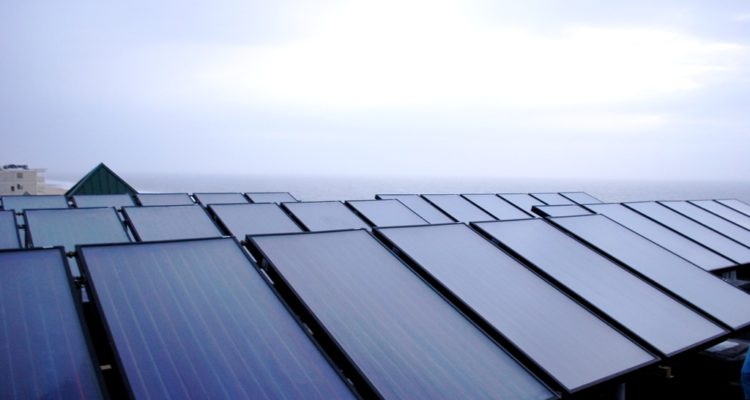By Dr Indrajit Mukhopadhyay
A specialisation in solar PV, CSP and CST technologies; power electronics, or energy and infrastructure management, can lead students to soaring careers that keep appreciating
Being located in the equatorial Sun Belt of the earth, India is bestowed with the enormous blessing of incident solar radiation of approximately 5,000 trillion kWh. As a result, most parts of our country receive on average 4 to 7 kWh of energy per sq mtr daily. This incident radiation can be effectively harvested through two matured but still developing technologies. The first is the photovoltaic (PV) option, in which incident solar light is harvested and converted to DC electrical energy via solar cells that are based on primitive photoelectric effects. The other option, known as concentrated solar power (CSP), concentrates the heat of the incident solar radiation to generate super heated steam, powering turbine generators to produce electrical energy, similar to that for conventional fossil fuel-based thermal power generating stations. Another important application of concentrated solar heat is in the processes of heating and cooling, known as concentrated solar thermal (CST) technology. All these processes not only produce useful electrical energy, but also protect the climate by avoiding emissions of carbon dioxide, the major component of greenhouse gases. Thus, renewable resources are utilised in a cycle as per the rule of nature for a sustainable world. Moreover, efficient utilisation of electricity has been emerging as a new field in which the loss of energy from transmission and distribution networks is minimised. This new concept is known as ‘Smart grid technology’. The introduction of smart grid technology and its complementary micro grid or mini grid applications require quality databases, as well as, two-way communication systems.
All these new applications in solar PV and CSP demand different levels of thought and a skilled workforce for the large scale deployment of solar energy generation units in society. Looking at the target of the Government of India, which is almost 20 to 22 GW of solar energy through PV and the installation of CSP in an area of approximately 20 million square metres, it is expected that the country will require millions of qualified and skilled young people in the forthcoming years. While a direct workforce is required for the expansion and installation work, numerous highly qualified persons are also needed to cover other areas like economic evaluation, climate monitoring, setting rules for regulating various aspects, efficient management, administration, etc. The most important requirement will be for researchers and professors who will contribute to educating and providing qualified personnel for the aforementioned purposes. Overall, there will be an enormous volume of opportunity for the youth in the country in the field of utilising solar energy for a sustainable, green India.
The solar industry offers premium remuneration in the range of Rs 2.4 to 6 lac per annum to freshers. However, depending on subject knowledge and expertise, remuneration can reach almost any level
Eligibility
People with degrees in electrical, electronic and communication, mechanical and civil engineering can take special courses in their fourth year on solar PV, CSP and CST technologies to render them directly deployable in the sector.
Engineers with mechanical, electrical and electronic and communication backgrounds can apply for MTech courses in energy systems and technology, which are taught at Pandit Deendayal Petroleum University (PDPU), Gandhinagar IIT, Mumbai; School of Solar Energy, Jadavpur University, Kolkata, IIT Delhi, and many other universities in India. There are several national research centres and universities where graduate student can carry out Ph D work in various fields of solar energy. Engineers with electrical or electronics background can apply for MTech. Courses in power electronics, which is, and will continue to be of great demand. Graduate students can also take up management careers in energy and infrastructure to boost solar industries.
Remuneration
The solar PV and CSP industries are going to become enormous in India’s future. In terms of the field’s substantial growth, many significant industries have been established and are expanding daily. It has been observed that the industry offers premium remuneration in the range of Rs 2.4 and Rs 6 lac per annum to fresh applicants. However, depending on subject knowledge and expertise, remuneration can reach almost any level. With higher education and experience, remuneration has been found to increase appreciably.
The author is Head of the Department, Solar Energy, Pandit Deendayal Petroleum University, Gandhinagar, Gujarat
This article appeared in the July 2015 issue of Pure & Eco India



Leave a Reply